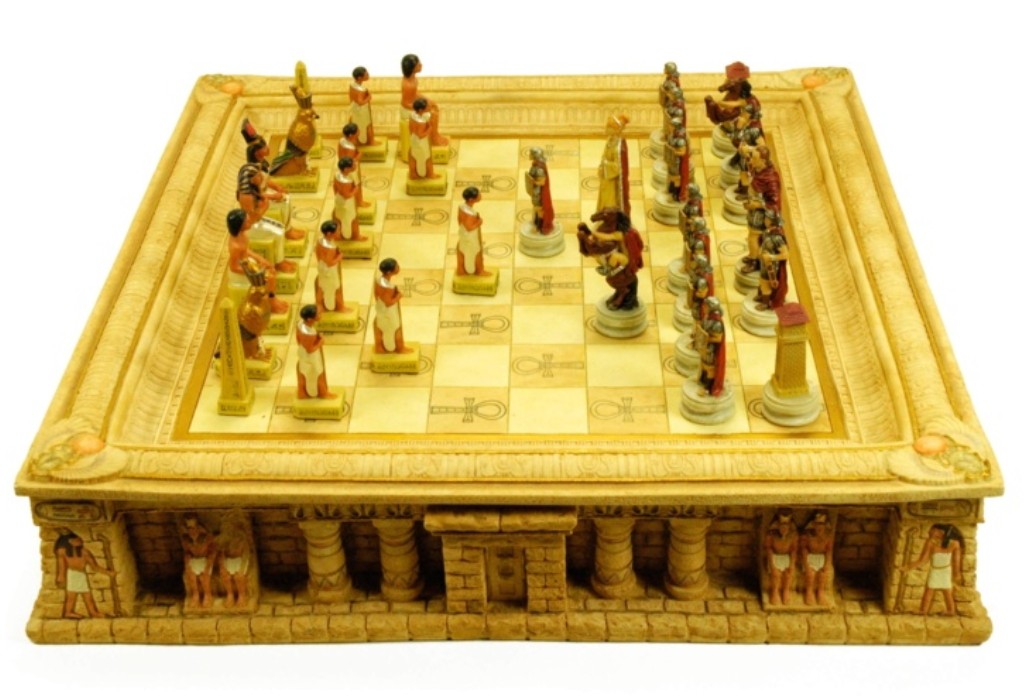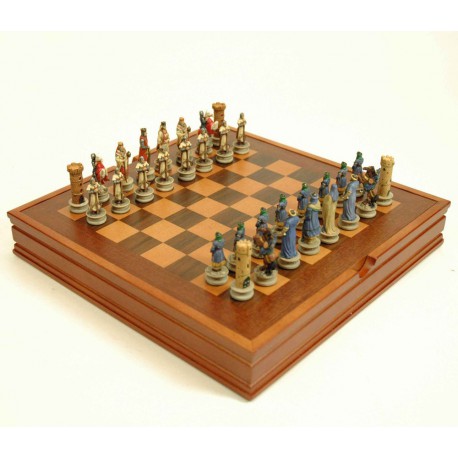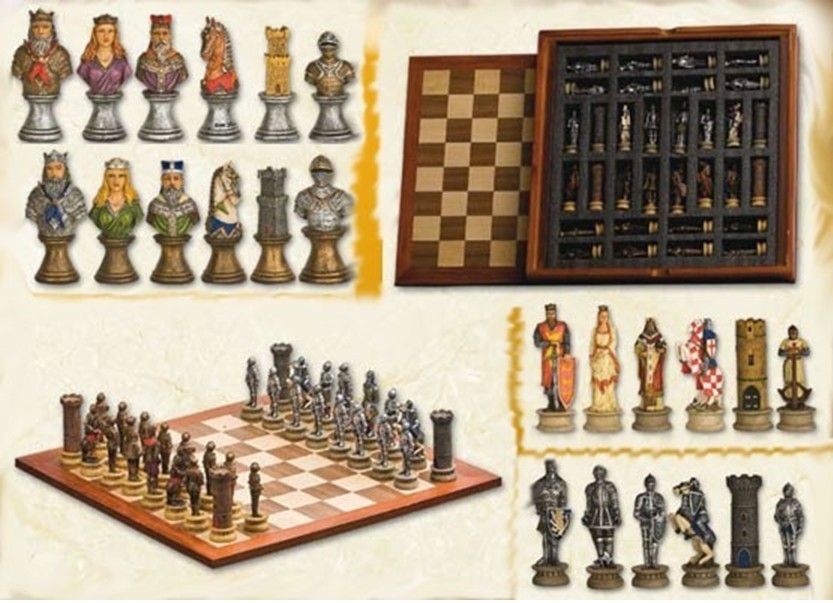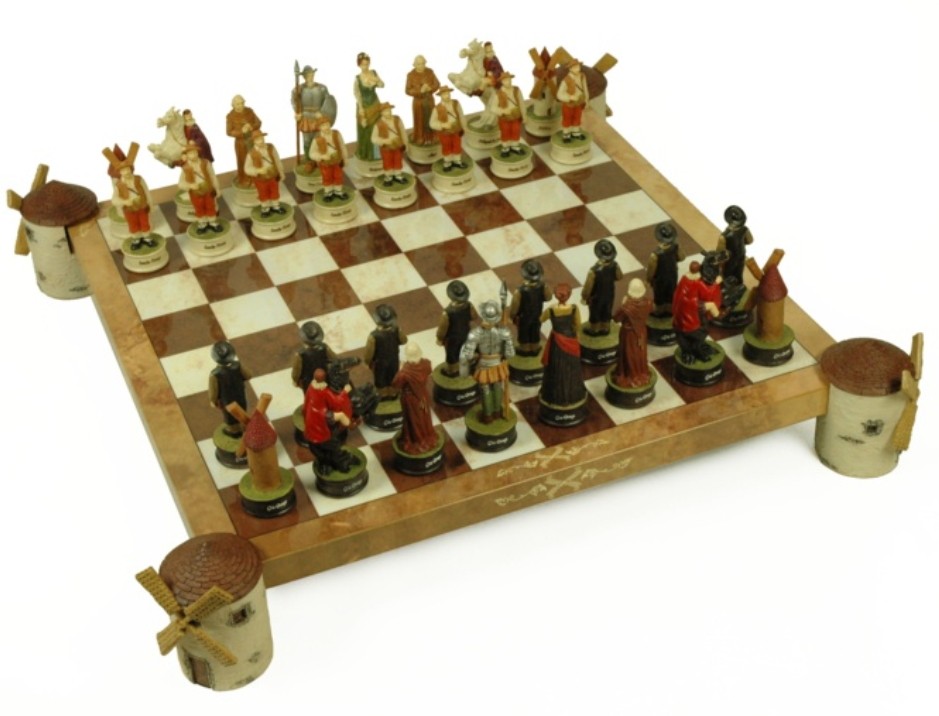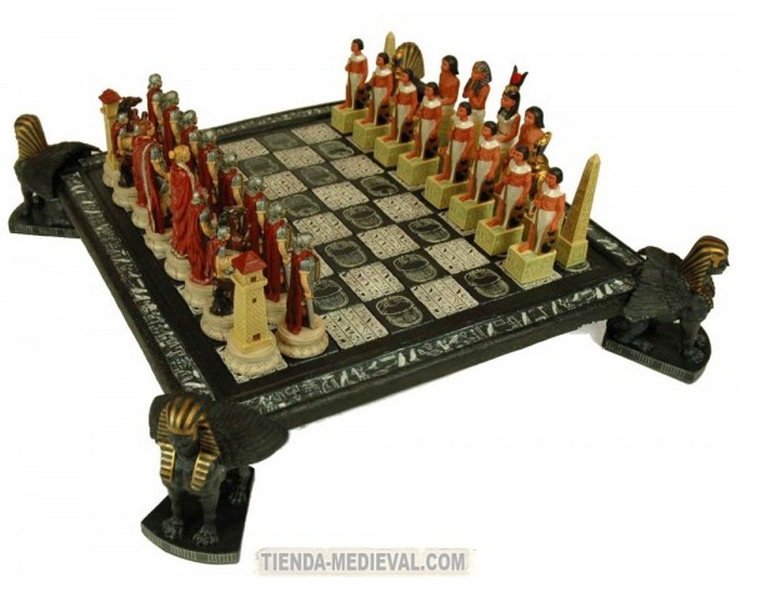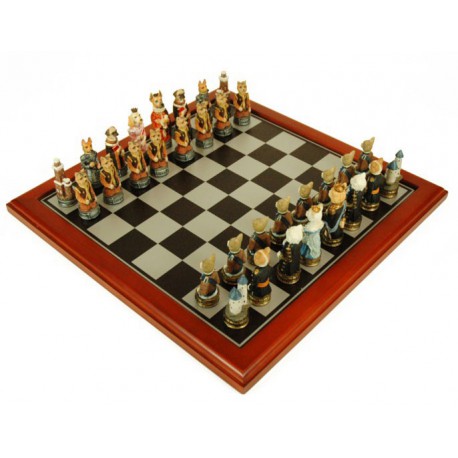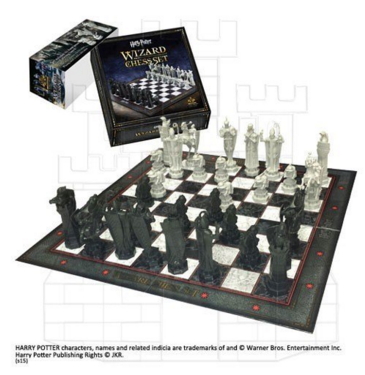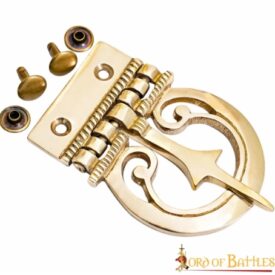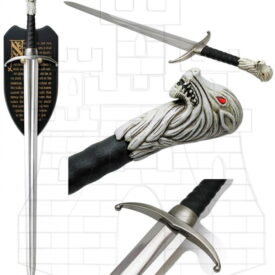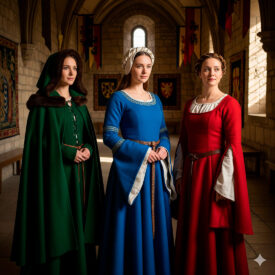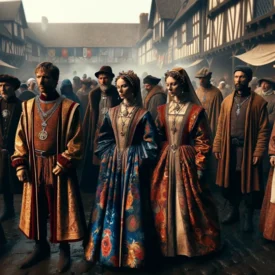Chess, that millennia-old strategy game that has captivated brilliant minds throughout the centuries, is much more than a simple pastime. It is a symbolic battlefield, an intellectual challenge, and a reflection of the social and cultural evolution of humanity. Its history is a complex tapestry, woven with legends, migrations, and transformations that have shaped it into the “king of board games” we know today.
Let us embark on this journey through time to unravel the true origins of chess, debunk some popular beliefs, and understand how this game has managed to transcend borders and eras, keeping its strategic essence intact.
Chess in Egypt and Rome? Debunking Its Origin
When one ponders the origins of chess, it is common to think of grand civilizations such as Ancient Egypt or majestic Rome. And it is undeniable that these cultures had a rich and sophisticated tradition in board games, with chessboards and pieces that bear a superficial resemblance to our beloved chess. In fact, the archaeological record offers us fascinating glimpses, such as images of 8×8 boards adorning the walls of ancient temples like Kurna, or the existence of emblematic games like Senet, which speak of a deep fondness for strategic entertainment in antiquity.
However, despite these evocative similarities and the undeniable presence of board pastimes in the ancient world, it is crucial to establish a fundamental distinction: none of these games can be considered, under any circumstances, a direct precursor to chess as we conceive and play it today. There is not a single historical or archaeological piece of evidence to suggest that the complex strategies, intricate rules, or intrinsic dynamics of those games directly and decisively influenced the later development of chess. The oldest recorded chess game, according to the meticulous data compiled in the “Oxford Encyclopedia of Chess Games,” dates back to 1490. But even this game, as old as it is, does not adhere to the modern rules that govern the game today. Chess, in its essence and lineage, stands as a truly unique creation, with its own distinctive evolutionary path.
Therefore, while it is fascinating to contemplate the chess-like games of ancient civilizations, it is important to recognize that chess has its own roots, which extend far beyond the pyramids and Roman forums, towards a more specific and documented origin that we will explore below.
From Chaturanga to Shatranj: The True Origin of Chess
The vast majority of historians and experts agree that modern chess, that game of wit and strategy we know today, has its deepest roots in chaturanga. This legendary game appeared in northern India at the dawn of our era, marking a fundamental milestone in the history of board games. The term “chaturanga” is no coincidence; it comes from Sanskrit and its meaning, “four sections,” clearly alludes to the four main divisions that made up the powerful Indian army of the time: agile cavalry, robust infantry, imposing elephants, and swift chariots.
Chaturanga was distinguished as a game for four participants, played on an 8×8 board. An interesting peculiarity of this primitive board was that its 64 squares were all the same color, unlike the alternating colors that characterize the modern chessboard. The game had six types of pieces, each with its own role and specific movement, representing the elements of the army: the rajah (the equivalent of today’s king), the counselor (a piece that would evolve into the queen), the horse, the soldier (the precursor to the pawn), the elephant, and the chariot. Over time, chaturanga began an expansive journey from its cradle in India, spreading both eastward and westward. During this cultural migration, the game did not remain static; on the contrary, it underwent significant transformations, absorbing and adapting ideas and elements from other cultures, with a particularly notable influence from Persia.
It was precisely from this Indian chaturanga that, around the year 600 AD, the Arab game known as shatranj was born and developed. This is, without a doubt, the first game that historians and chess players recognize as the direct and identifiable ancestor of chess. Shatranj was played on an 8×8 board and each side had 16 pieces, including the soldier (pawn), horse, elephant (a piece that, unlike the modern bishop, had a more limited and weaker movement), the chariot (rook), the counselor (a queen with much more limited power than today), and the shah (king). The main objective was to checkmate the king or, failing that, capture all the opponent’s pieces, leaving only their king on the board.
The Arab culture played an absolutely crucial role, not only in the evolution of chess, but also in its vast dissemination throughout the world. In fact, the very word “chess” that we use today is a direct linguistic inheritance from the Arabic “al-shatranj.” Likewise, the universal exclamation “checkmate” is a phonetic and semantic derivation of the Arabic expression “al-shah-mat,” which translates as “the king is dead.” Since the 9th century, Arab scholars and masters paid considerable attention to chess, creating important treatises and works on the game, such as the famous “The Book of Chess” by Al-Adli. For them, chess was not just a game; they considered it a valuable pedagogical tool, capable of fostering logical thinking, strategy, and mental discipline.
One of the most famous and enduring legends associated with chess, that of the wise Sissa Ben Dahir and his seemingly modest exponential request for grains of wheat from King Balhait, originates precisely in the rich Arab literature. This story not only amazes with the unimaginable magnitude of the final number of grains, but also underscores the deep connection that chess established with the discovery of positional notation and the advanced mathematical and astronomical applications that flourished at the time. This anecdote, often told to illustrate the power of exponential growth, is further testimony to how chess became intertwined with the knowledge and wisdom of the civilizations that adopted and made it their own.
Chess in Medieval Europe: Adaptation and Evolution
The arrival of chess in Europe was a gradual and fascinating process, intrinsically linked to the cultural and territorial expansion of the Muslims. It was through al-Andalus, the Iberian Peninsula under Islamic rule, and also through the Crusades, that this strategic game began to penetrate the European continent during the Middle Ages. From Spain, its popularity spread rapidly throughout the rest of Europe, finding particularly fertile ground among the Christian nobility and clergy, who adopted it as a distinguished pastime and mental exercise. During this medieval period, numerous works and treatises on chess were written, many by Jewish authors, who not only documented the rules of the game but also contributed to its dissemination and early standardization.
The chessboard, as we know it today with its alternating light and dark squares, also underwent significant evolution during the Middle Ages. Until the end of the 12th century, it was common for the squares of the board to be a single color, usually white, with simple lines to separate and define the squares. However, by the 13th century, the characteristic alternation of light and dark squares had become widespread, giving the board the aesthetics and functionality that endure to this day.
A document certifying the early presence of chess in Europe, preserved in the Historical Archive of the Crown of Aragon, reveals that the Count of Urgel bequeathed his chessboard with all its pieces to an abbey in his will of 1010, demonstrating the value and esteem afforded to the game. Perhaps one of the most important documents illustrating the relevance of chess in medieval royalty is that of King Martin the Humane, dated 1410, which contains three cards dedicated to chessboards and chess pieces made of different materials, evidencing the diversity and richness of the sets of the time.
After the first half of the 11th century, a document of particular interest to historians is the invaluable letter from Damiani, Archbishop of Ostia, who in 1061 wrote to Pope Alexander II. In this letter, Damiani reported the punishment he had imposed on a prelate of his diocese simply for entertaining himself by playing chess, giving us an idea of the perceptions and, at times, the moral restrictions that surrounded the game in certain ecclesiastical circles. Despite these occasional reticences, chess became established in Spain and other countries of medieval Christian Western Europe as one of the fundamental disciplines that a future knight should cultivate, along with equestrian sports, hunting, and good reading, such as the Holy Scriptures. This game was seen as a tool to develop intellect, strategy, and patience, essential qualities for men of military and social leadership.
A key figure in the history of medieval chess was Alfonso X the Wise, King of Castile, León, and Galicia. Between 1252 and 1284, this monarch, known for his deep interest in knowledge and culture, commissioned the creation of the monumental “Libro de los juegos,” also known as the “Book of Chess, Dice, and Tables.” This extraordinary work, composed of 98 parchment folios and adorned with 150 splendid miniatures, is not only an artistic treasure, but also the oldest book on chess that has survived to this day. It contains a detailed exposition of the rules of the game and a collection of 103 chess problems, 89 of which have a clear Arab origin, highlighting the persistent influence of Islamic culture on the game. This valuable manuscript, carefully preserved in the Monastery of El Escorial, is an invaluable document for chess research and a primary source for understanding chess in medieval Europe.
Medieval Chess Pieces and Their Symbolism
In the time of Alfonso X, chess pieces began to adopt the medieval appearance and iconography that, to a large extent, we still recognize today. We find the king, the central piece; the queen, then known as the alferza or captain, whose role and power were far from what they are today; the knights, with their peculiar “L” movement; the rooks, symbolizing fortifications; and the bishops, which in Spanish became the “alfiles,” reflecting the importance of the Church in medieval society. There are also examples of ivory pieces that demonstrate the quality of the era.
However, it is essential to understand that the movements of these medieval pieces differed significantly from those that govern modern chess:
- The king, knight, and pawn already moved similarly to how they do today, maintaining their strategic essence through the centuries.
- The queen, or alferza, was at that time the weakest piece on the board, with an extremely limited movement: she could only move one square diagonally in any direction. Her power was almost insignificant compared to her modern counterpart.
- The bishop moved two squares diagonally, a distinctive feature of the era. In addition, it had the peculiarity of being able to jump over pieces, an ability that would be lost in the later evolution of the game.
- Castling, one of the most important defensive and developmental moves in modern chess, simply did not yet exist in medieval chess.
The adaptation of chess to feudal European society not only brought changes to the rules, but also a profound transformation in the nomenclature and symbolism of the pieces, reflecting the hierarchy and values of the time. The Arabic firz, which represented the counselor or vizier, metamorphosed into the powerful figure of the Queen, a piece that, over time, would become essential in the feudal political and social system. Experts such as Marilyn Yalom, author of the influential work Birth of the Chess Queen, suggest that the appearance and growing power of the Queen on the chessboard was no coincidence, but a direct reflection of the political prominence acquired by influential women in medieval Europe, even reaching thrones. Notable examples include Empresses Adelaide of Burgundy and Theophano Skleraina, who exercised regencies of great importance and power. In fact, the “Poem of Einsiedeln,” a didactic document dating from around 997, already describes the game with the Queen placed next to the King, anticipating her rise on the board.
Other pieces also adapted to the new cultural reality: the Arabic al-fil, which represented the elephant, became “alfil” in Spain, maintaining an etymological connection with its origin. However, in the Anglo-Saxon world, this piece became the “bishop,” a clear allusion to the ecclesiastical powers that dominated medieval society. The Persian rukh, which symbolized a chariot or mobile fortress, remained “roque” in Spanish and, over time, its shape became associated with a “rock” and from there with the shape of a tower or castle that we see in current pieces. Different styles and practices of medieval chess can be found, with clear differences from Greek chess or other cultures such as the Vikings.
Medieval chess manuscripts constitute a legacy of incalculable value, as they laid the foundations of chess theory and offer us a privileged window to observe how the game became established and took root in Europe. These works not only included didactic literature that taught how to play, but also collections of chess problems for study and practice, as well as moralizing texts that used chess as a powerful metaphor for society, its hierarchies, and its ethical values. The medieval chess game, with its 64-square board (half light and half dark) and its pieces in the starting position, simulated a battlefield with two differentiated armies entering combat, making it especially attractive to the chivalric mentality of the time. The European countries where this game spread the most were Spain and Italy, and its value was such that chessboards and pieces were considered precious goods, frequently appearing in wills as a prominent part of an inheritance.
Chess in the Renaissance and Its Professionalization
The most radical and transformative change in the rules of chess, the one that would catapult it to its current form and make it the dynamic game we know today, occurred around 1450, in the midst of the Renaissance. This fundamental milestone was the appearance of the “furious queen.” With the aim of making the game faster, more exciting, and ultimately more fun, the queen was given unprecedented power: she was allowed to move as far as she wanted in any direction, whether diagonal, vertical, or horizontal. This revolutionary move combined the movement of the bishop and the rook, making the queen the most powerful piece on the board. The magnitude of this change was such that the French, amazed by the new strength of the piece, nicknamed the new game “chess of the furious queen.” In addition to this significant modification, pawns also experienced improved mobility, gaining the ability to advance two squares on their first move, which accelerated the development of openings and added a new strategic layer to the game.
Although today tournaments are an intrinsic and indispensable part of chess, they did not always exist in the structured and competitive form we know. The first informal international tournament on record took place in 1575, at the lavish court of Philip II in Madrid. This pioneering event consisted of an exciting match between the most outstanding players from Italy and Spain, setting a precedent for organized competition in the chess world.
Chess strategies also evolved drastically over the centuries. During the 18th and early 19th centuries, a markedly aggressive and romantic style of play prevailed. Players, strongly influenced by the “Italian school,” prioritized rapid development of pieces and early attacks, freely sacrificing pawns to open lines and diagonals for a quick and forceful checkmate. The King’s Gambit, for example, was an extremely popular opening at this time, reflecting the offensive mentality of chess players. This period saw the emergence of great chess kings and different generations of players, each bringing their own ideas and practices.
It was Wilhelm Steinitz, the first official world chess champion in 1886, who completely revolutionized the strategic understanding of the game. Before Steinitz, reckless attacks and the direct pursuit of mate were the norm. He, however, introduced a much more positional style of play, focused on the importance of pawn structure, bishop activity, and the creation of outposts for knights. Steinitz advocated launching attacks only after careful preparation and accumulation of positional advantages. His ideas, initially labeled as cowardly by some of his contemporaries, earned him the nickname “father of modern chess,” and his principles laid the foundations of contemporary chess strategy. This first world champion marked a before and after in the world championship.
Key Technical Innovations for Chess Games
The professionalization of chess also brought with it important technical innovations that transformed the way the game was played and perceived:
- Staunton Pieces (1849): Designed by Nathaniel Cook and actively promoted by the influential chess player Howard Staunton, these pieces quickly became popular for their easy recognition, stable bases that prevented accidental falls, and attractive aesthetic design. Today, the Staunton design is the standard and official design for chess pieces used in tournaments and competitions worldwide, a testament to its functionality and elegance.
- The Chess Clock (1861): Before the introduction of chess clocks, games could last for hours, even more than 14, as there were no time limits for moves. The first timers used were hourglasses, which evolved into “push-button” clocks in 1884, allowing each player to control their time individually. Finally, in 1964, electronic clocks appeared, facilitating the development of faster and more dynamic modalities, such as blitz chess and rapid chess. The International Chess Federation (FIDE) has played a crucial role in standardizing these innovations.
Finally, chess has also been a fascinating battleground for the development of artificial intelligence. In 1770, the ingenious Hungarian inventor Wolfgang von Kempelen unveiled the Mechanical Turk to the world, a supposed machine that played chess and, surprisingly, managed to defeat opponents as strong as Napoleon Bonaparte and Benjamin Franklin. Although it was revealed to be an ingenious hoax, controlled by a human chess player hidden inside, the Turk greatly contributed to expanding the popularity of chess and can be considered a “spiritual precursor” of real chess machines. The definitive milestone in the confrontation between man and machine came in 1997, when IBM’s supercomputer Deep Blue managed to defeat then-world champion Garry Kasparov in a historic chess match. This was a historic moment that demonstrated the incredible calculation and processing power of machines. Today, chess engines are exponentially stronger than any human player, and their influence on the study and preparation of chess players is undeniable. Names like Bobby Fischer, among the best players, have left an indelible mark on the chess world.
From its uncertain origins in ancient India, through its profound transformation in Persia and its establishment in medieval Europe, chess has proven to be a game with a timeless staying power and unrivaled global reach. Its evolution, from a symbolic war game to a complex intellectual discipline, has reflected and adapted to the societies that have adopted it, becoming a mirror of human history. Chess is more than just a pastime; it is an art, a science, and a powerful metaphor for the world, an eloquent testament to human creativity and ingenuity. Its rich and passionate history reminds us why, with more than 500 million players today, chess remains, indisputably, the king of board games.
If the history of chess has captivated you and you wish to own a piece of this rich tradition, we invite you to explore our exclusive selection of collectible chess sets, where you will find designs inspired by different eras.
In addition, for lovers of strategy games, don’t miss our category of other medieval board games, perfect for challenging your mind and reliving the excitement of ancient pastimes.

